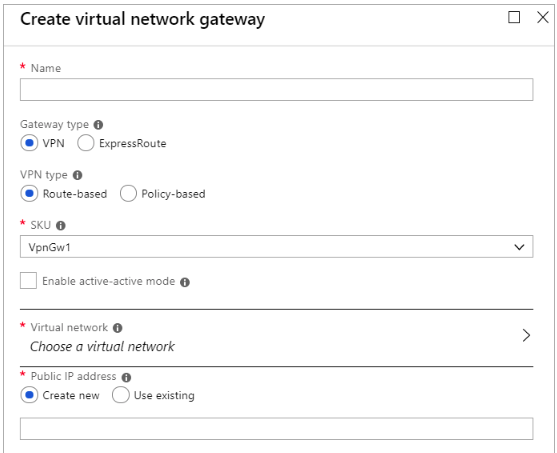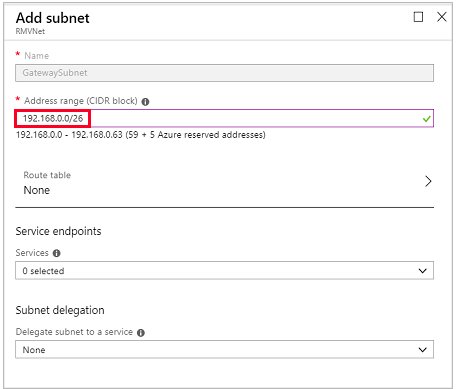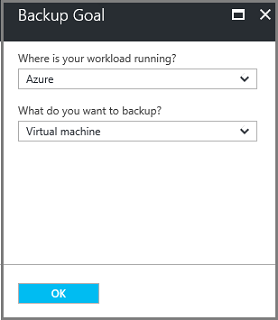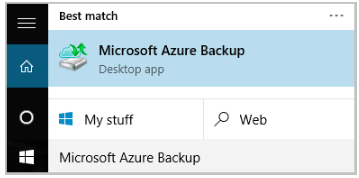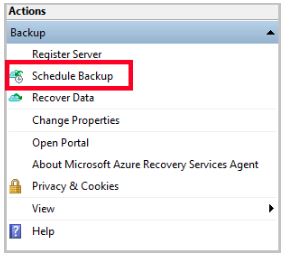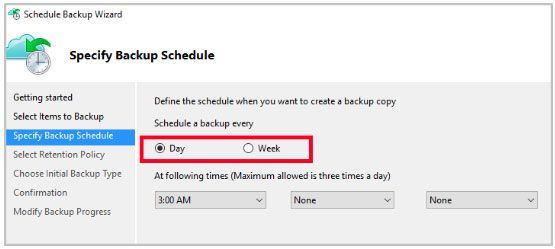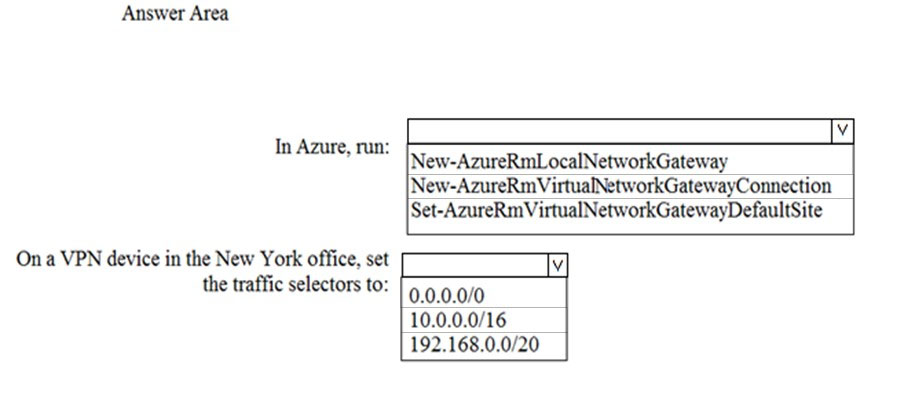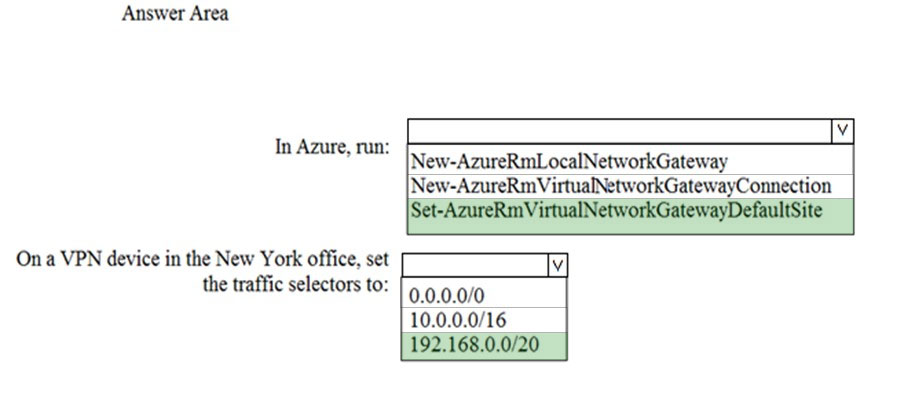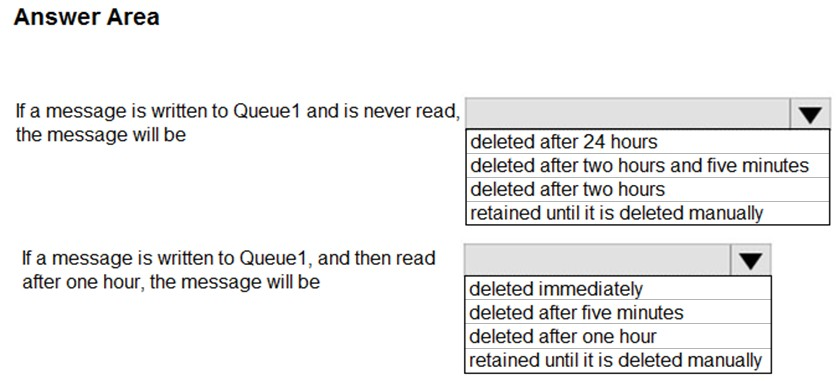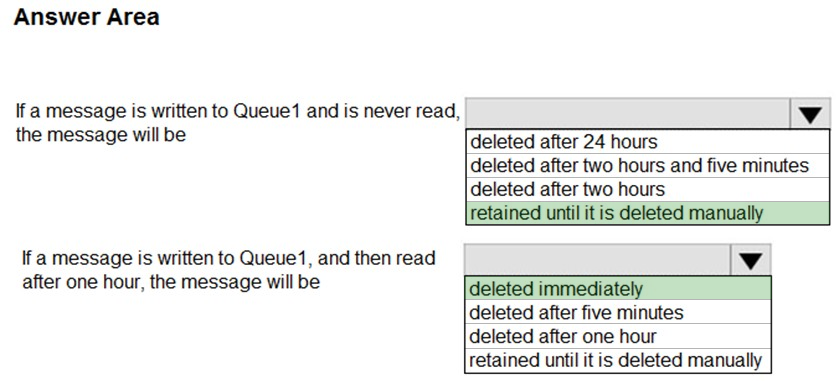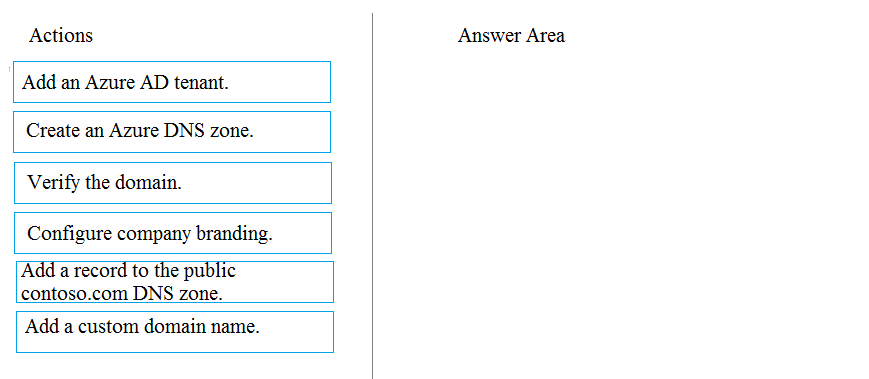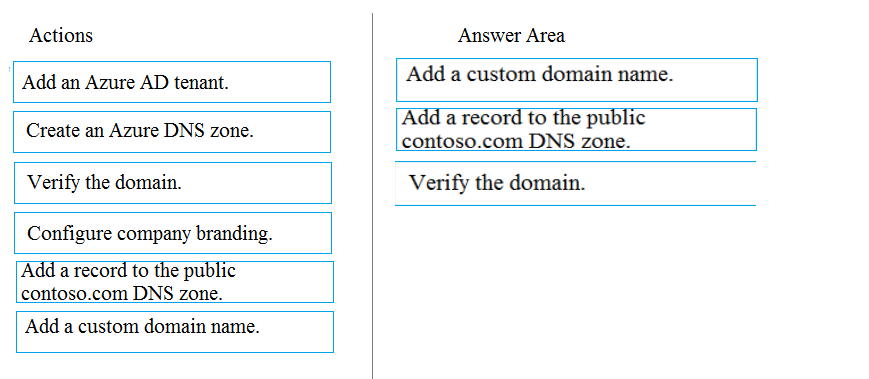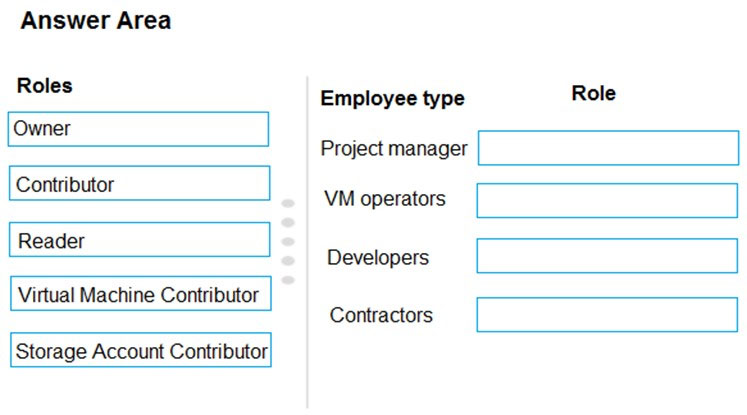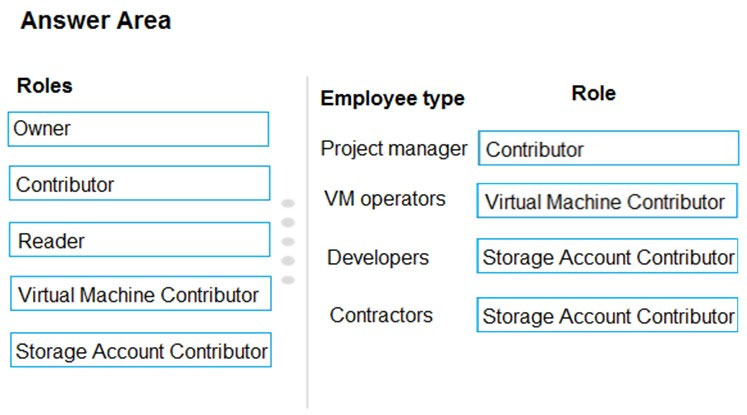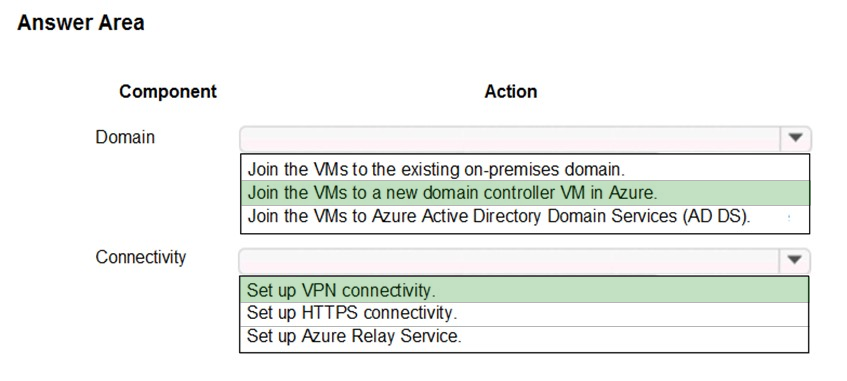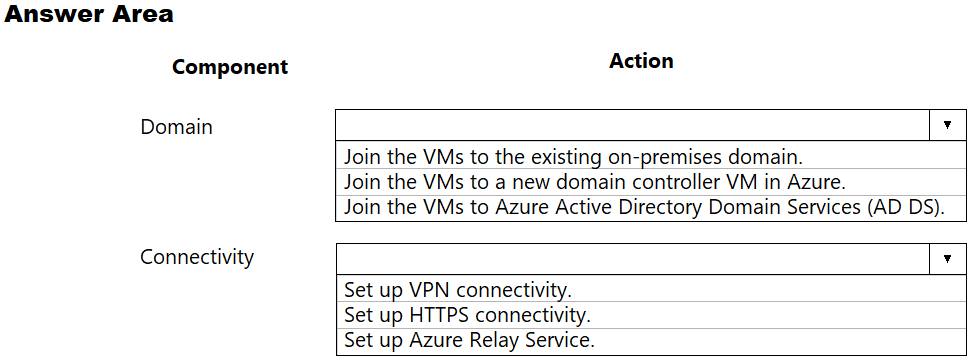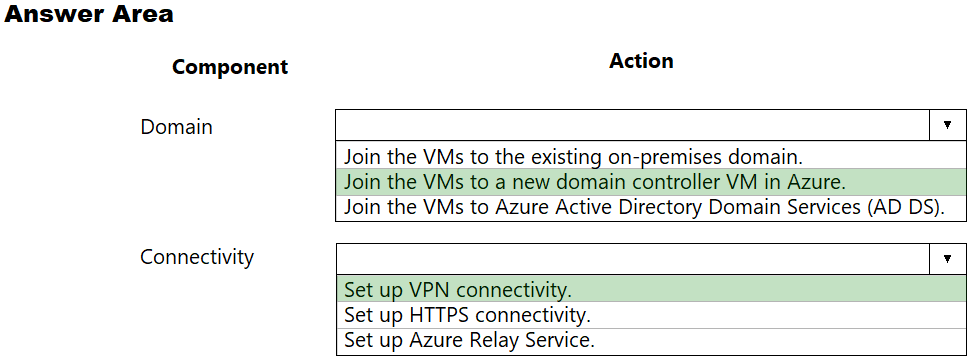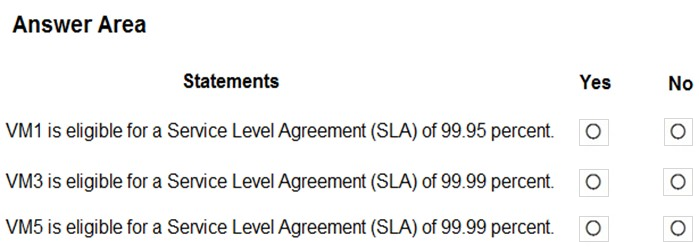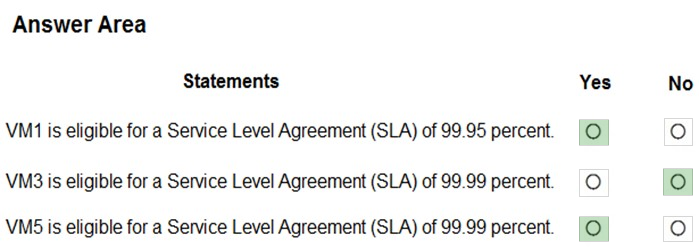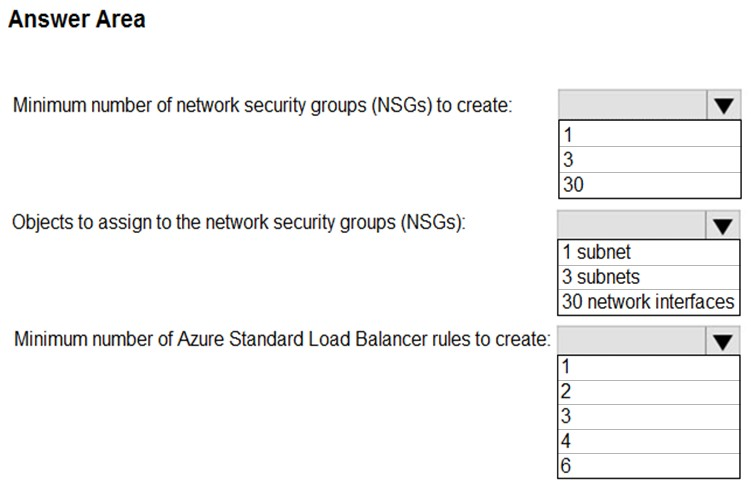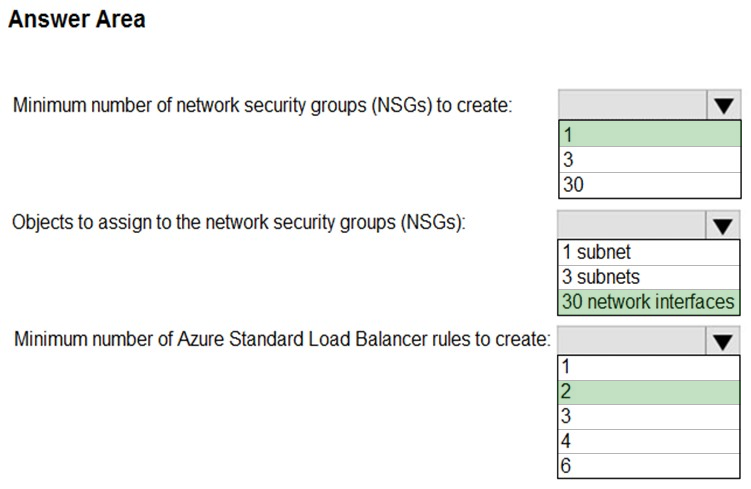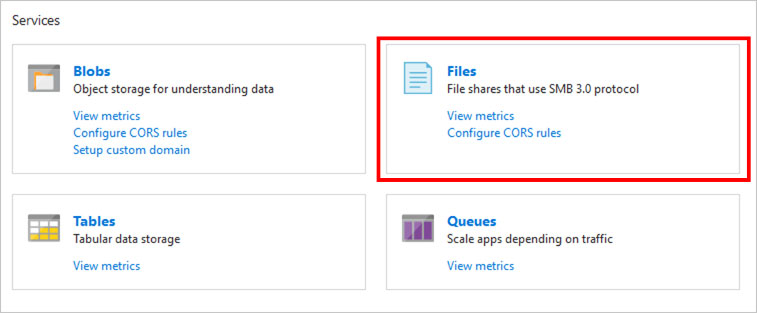AZ-303 Mock Test Free – 50 Realistic Questions to Prepare with Confidence.
Getting ready for your AZ-303 certification exam? Start your preparation the smart way with our AZ-303 Mock Test Free – a carefully crafted set of 50 realistic, exam-style questions to help you practice effectively and boost your confidence.
Using a mock test free for AZ-303 exam is one of the best ways to:
- Familiarize yourself with the actual exam format and question style
- Identify areas where you need more review
- Strengthen your time management and test-taking strategy
Below, you will find 50 free questions from our AZ-303 Mock Test Free resource. These questions are structured to reflect the real exam’s difficulty and content areas, helping you assess your readiness accurately.
A company plans to use third-party application software to perform complex data analysis processes. The software will use up to 500 identical virtual machines (VMs) based on an Azure Marketplace VM image. You need to design the infrastructure for the third-party application server. The solution must meet the following requirements: ✑ The number of VMs that are running at any given point in time must change when the user workload changes. ✑ When a new version of the application is available in Azure Marketplace it must be deployed without causing application downtime. ✑ Use VM scale sets. ✑ Minimize the need for ongoing maintenance. Which two technologies should you recommend? Each correct answer presents part of the solution. NOTE: Each correct selection is worth one point.
A. single storage account
B. autoscale
C. single placement group
D. managed disks
SIMULATION - Click to expand each objective. To connect to the Azure portal, type https://portal.azure.com in the browser address bar.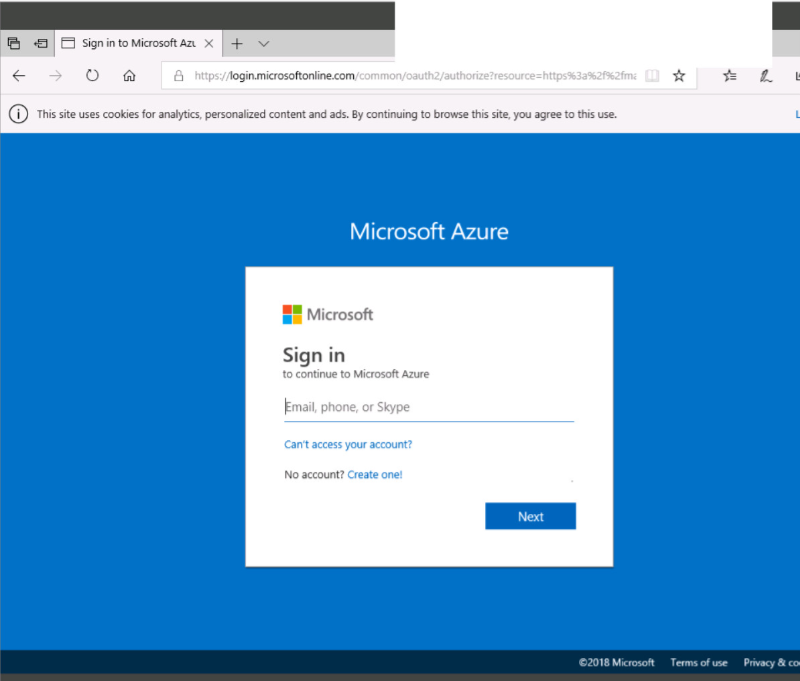
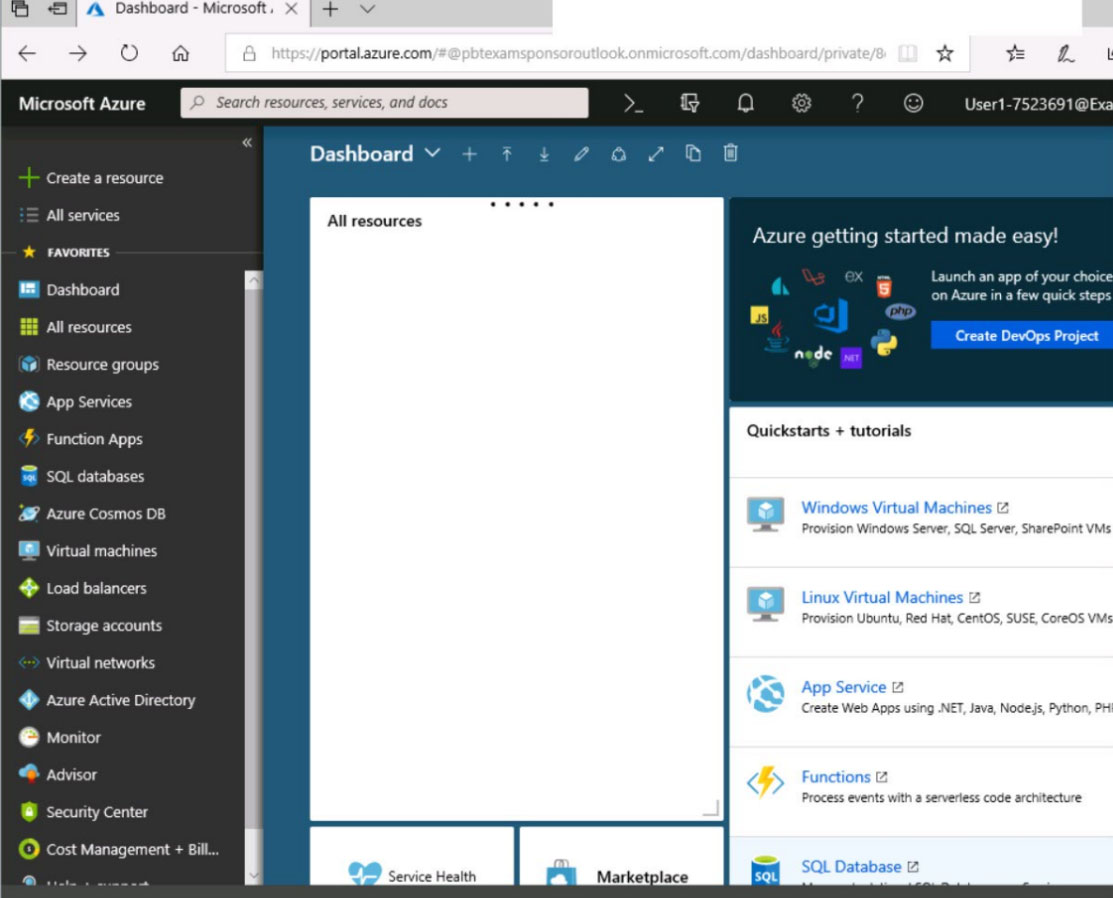
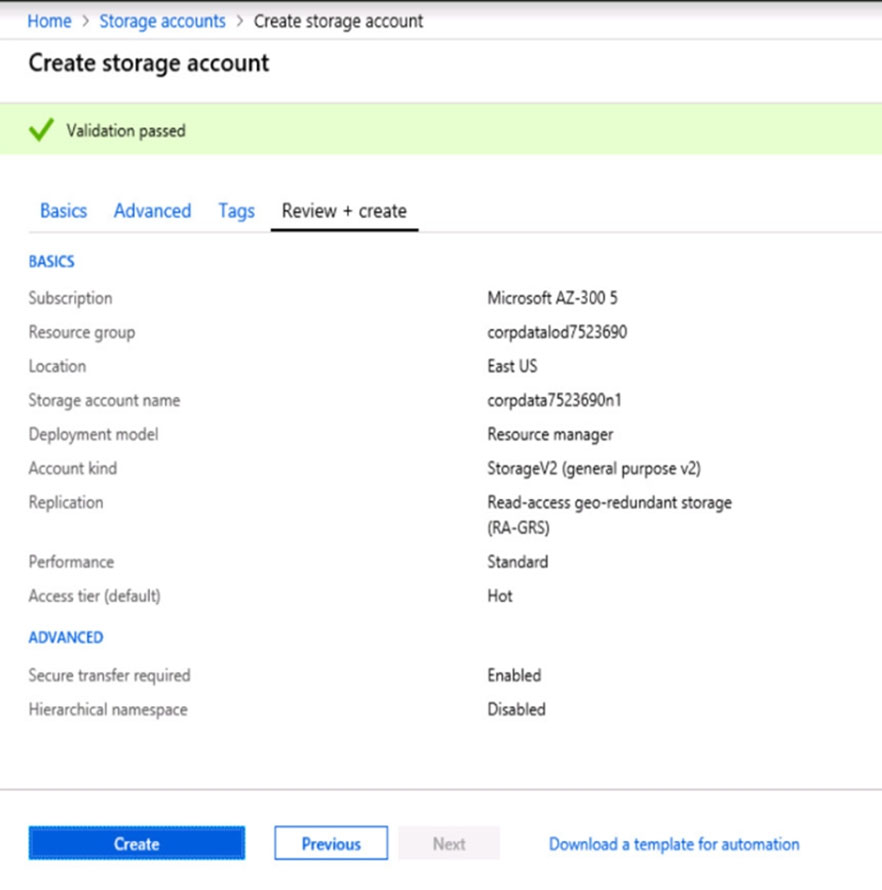
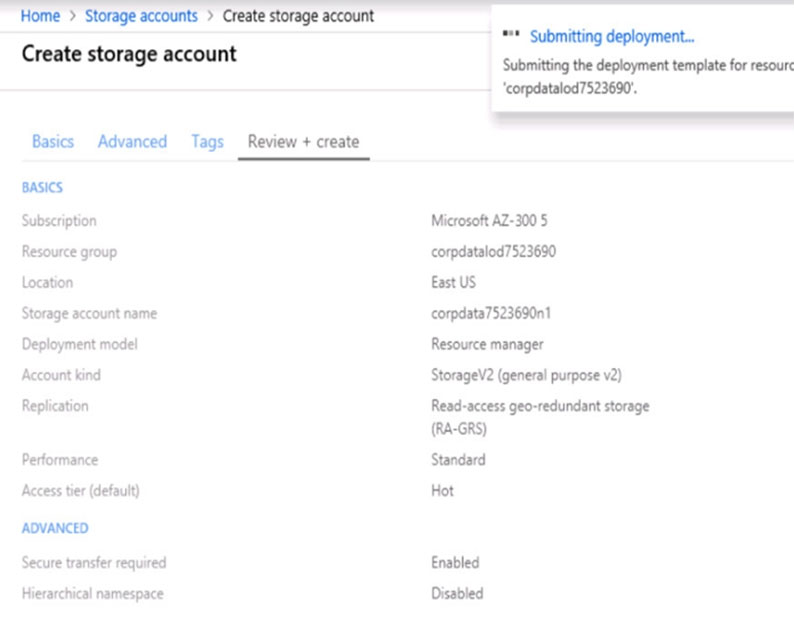
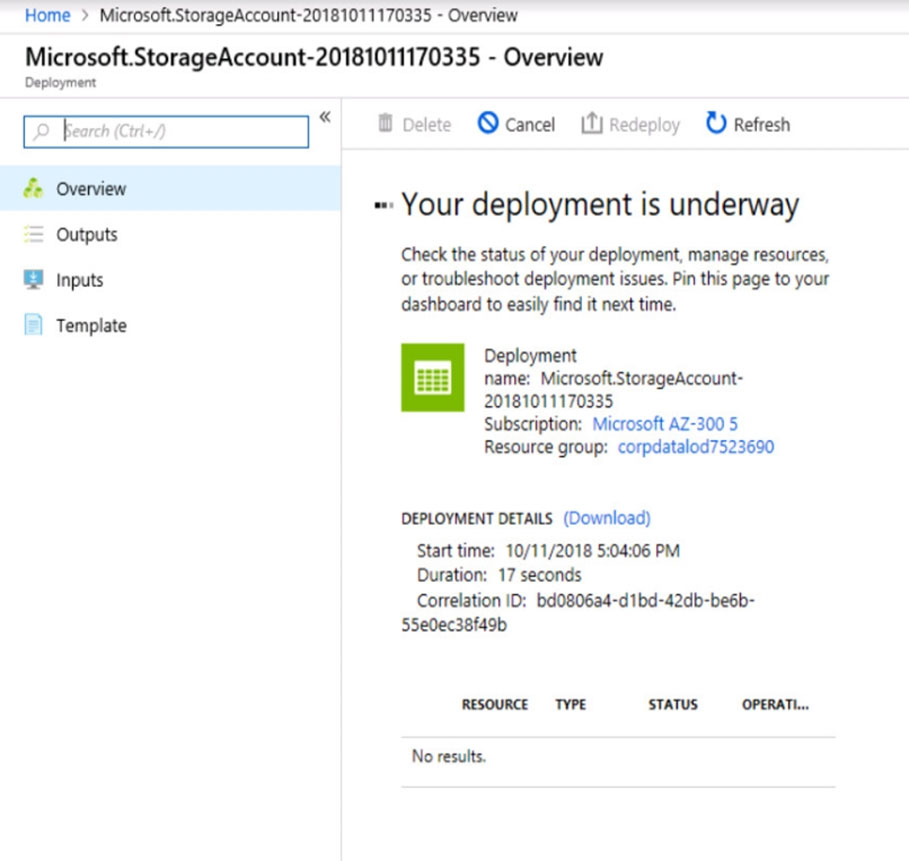
When you are finished performing all the tasks, click the `˜Next' button. Note that you cannot return to the lab once you click the `˜Next' button. Scoring occur in the background while you complete the rest of the exam. Overview - The following section of the exam is a lab. In this section, you will perform a set of tasks in a live environment. While most functionality will be available to you as it would be in a live environment, some functionality (e.g., copy and paste, ability to navigate to external websites) will not be possible by design. Scoring is based on the outcome of performing the tasks stated in the lab. In other words, it doesn't matter how you accomplish the task, if you successfully perform it, you will earn credit for that task. Labs are not timed separately, and this exam may have more than one lab that you must complete. You can use as much time as you would like to complete each lab. But, you should manage your time appropriately to ensure that you are able to complete the lab(s) and all other sections of the exam in the time provided. Please note that once you submit your work by clicking the Next button within a lab, you will NOT be able to return to the lab. To start the lab - You may start the lab by clicking the Next button. Another administrator attempts to establish connectivity between two virtual networks named VNET1 and VNET2. The administrator reports that connections across the virtual networks fail. You need to ensure that network connections can be established successfully between VNET1 and VNET2 as quickly as possible. What should you do from the Azure portal?
Note: This question is part of series of questions that present the same scenario. Each question in the series contains a unique solution that might meet the stated goals. Some question sets might have more than one correct solution, while others might not have a correct solution. After you answer a question in this section, you will NOT be able to return to it. As a result, these questions will not appear in the review screen. You have an Azure subscription. You have an on-premises file server named Server1 that runs Windows Server 2019. You manage Server1 by using Windows Admin Center. You need to ensure that if Server1 fails, you can recover Server1 files from Azure. Solution: You create an Azure Storage account and an Azure Storage Sync service. You configure Azure File Sync for Server1. Does this meet the goal?
A. Yes
B. No
Your company has an office in Seattle. You have an Azure subscription that contains a virtual network named VNET1. You create a site-to-site VPN between the Seattle office and VNET1. VNET1 contains the subnets shown in the following table.You need to route all Internet-bound traffic from Subnet1 to the Seattle office. What should you create?
A. a route for GatewaySubnet that uses the virtual network gateway as the next hop
B. a route for GatewaySubnet that uses the local network gateway as the next hop
C. a route for Subnet1 that uses the local network gateway as the next hop
D. a route for Subnet1 that uses the virtual network gateway as the next hop
You develop an entertainment application where users can buy and trade virtual real estate. The application must scale to support thousands of users. The current architecture includes five Azure virtual machines (VM) that connect to an Azure SQL Database for account information and Azure Table Storage for backend services. A user interacts with these components in the cloud at any given time. ✑ Routing Service `" Routes a request to the appropriate service and must not persist data across sessions. ✑ Account Service `" Stores and manages all account information and authentication and requires data to persist across sessions ✑ User Service `" Stores and manages all user information and requires data to persist across sessions. ✑ Housing Network Service `" Stores and manages the current real-estate economy and requires data to persist across sessions. ✑ Trade Service `" Stores and manages virtual trade between accounts and requires data to persist across sessions. Due to volatile user traffic, a microservices solution is selected for scale agility. You need to migrate to a distributed microservices solution on Azure Service Fabric. Solution: Create a Service Fabric Cluster with a stateful Reliable Service for each component. Does the solution meet the goal?
A. Yes
B. No
SIMULATION - Click to expand each objective. To connect to the Azure portal, type https://portal.azure.com in the browser address bar.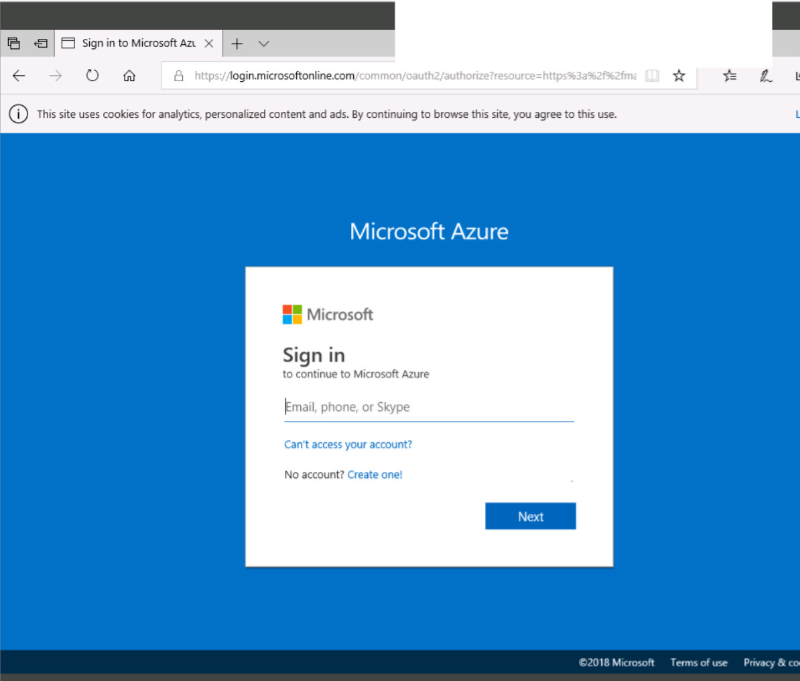
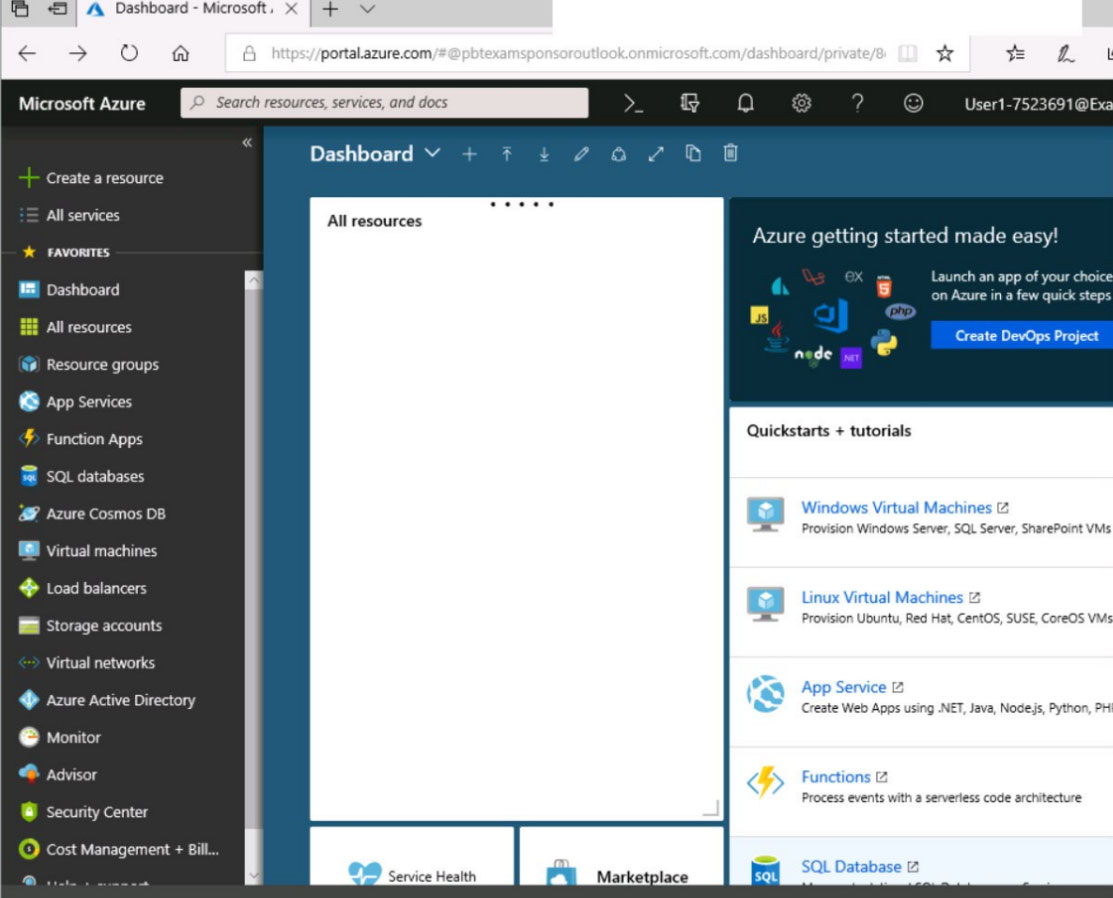
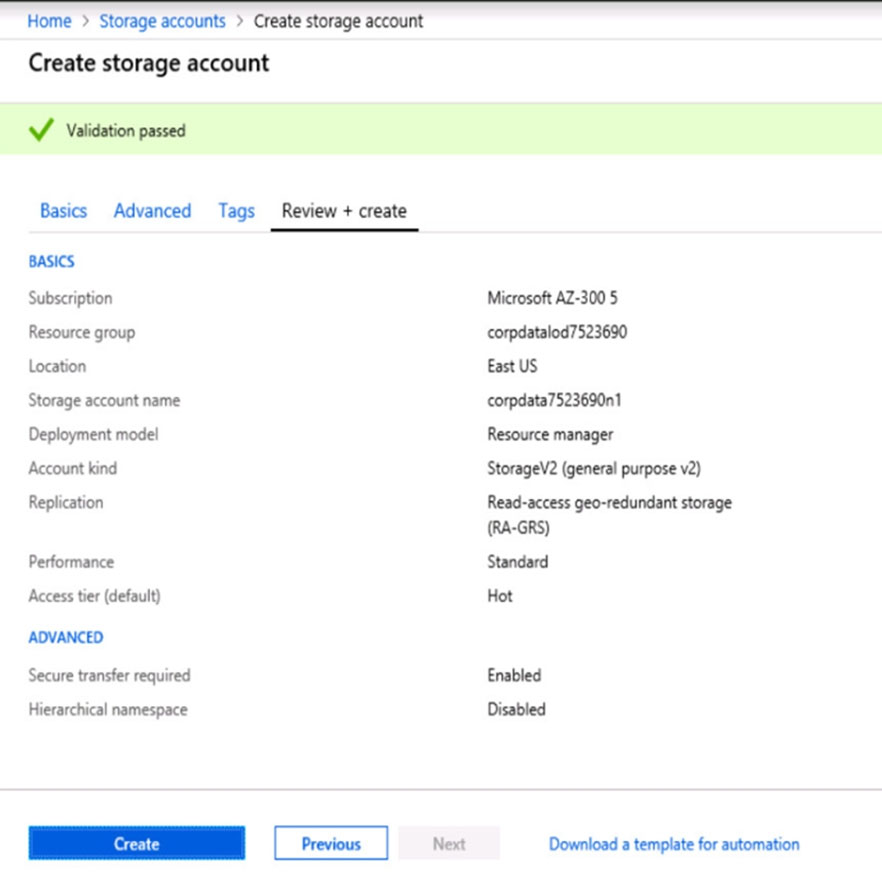
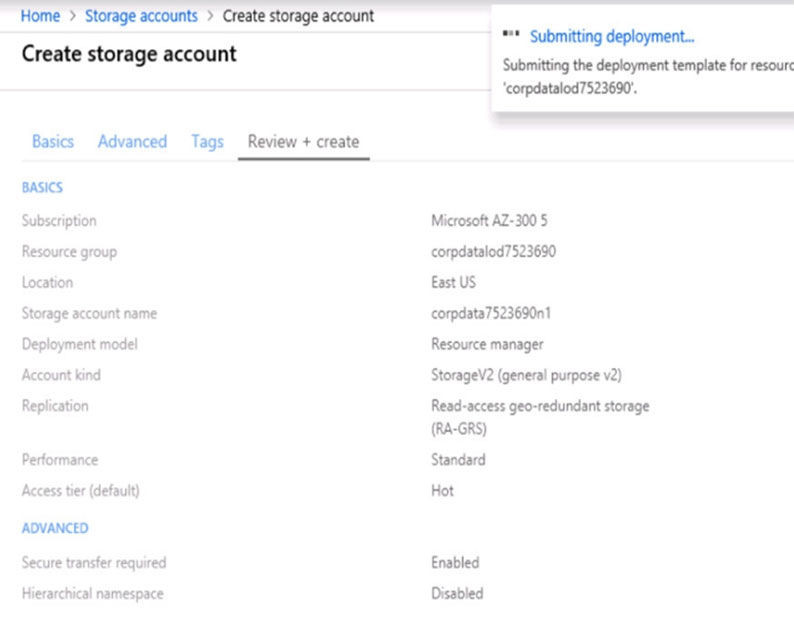
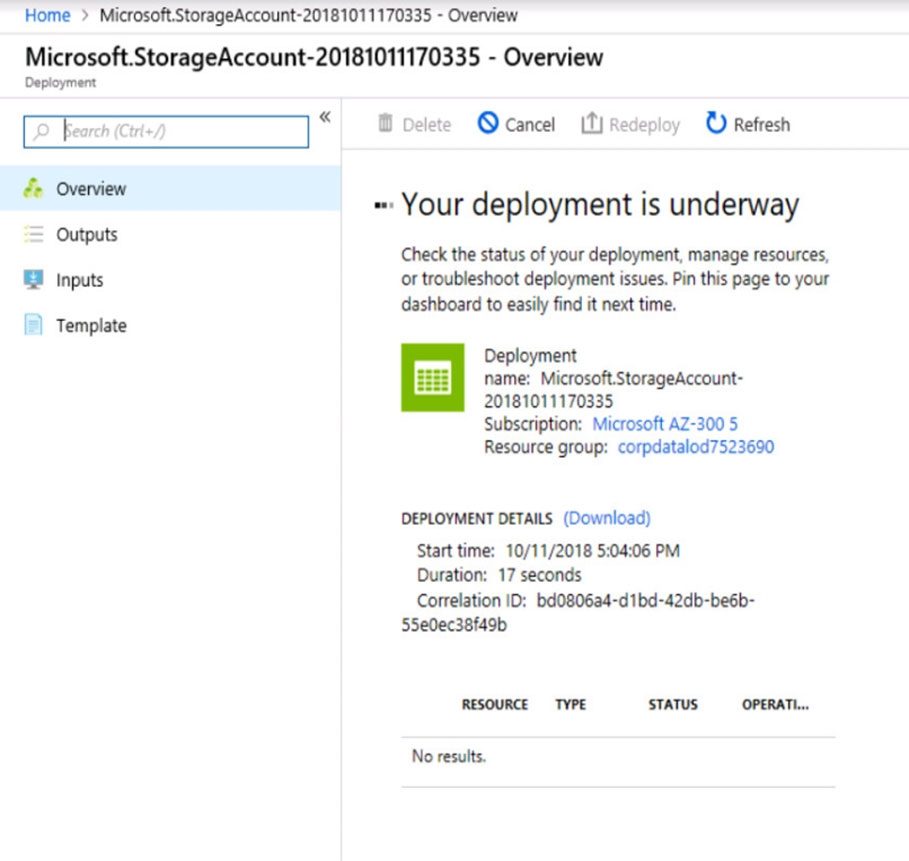
When you are finished performing all the tasks, click the `˜Next' button. Note that you cannot return to the lab once you click the `˜Next' button. Scoring occur in the background while you complete the rest of the exam. Overview - The following section of the exam is a lab. In this section, you will perform a set of tasks in a live environment. While most functionality will be available to you as it would be in a live environment, some functionality (e.g., copy and paste, ability to navigate to external websites) will not be possible by design. Scoring is based on the outcome of performing the tasks stated in the lab. In other words, it doesn't matter how you accomplish the task, if you successfully perform it, you will earn credit for that task. Labs are not timed separately, and this exam may have more than one lab that you must complete. You can use as much time as you would like to complete each lab. But, you should manage your time appropriately to ensure that you are able to complete the lab(s) and all other sections of the exam in the time provided. Please note that once you submit your work by clicking the Next button within a lab, you will NOT be able to return to the lab. To start the lab - You may start the lab by clicking the Next button. You plan to back up all the Azure virtual machines in your Azure subscription at 02:00 Coordinated Universal Time (UTC) daily. You need to prepare the Azure environment to ensure that any new virtual machines can be configured quickly for backup. The solution must ensure that all the daily backups performed at 02:00 UTC are stored for only 90 days. What should you do from your Recovery Services vault on the Azure portal?
You have an Azure policy as shown in the following exhibit.What is the effect of the policy?
A. You can create Azure SQL servers in any resource group within Subscription 1.
B. You can create Azure SQL servers in ContosoRG1 only.
C. You are prevented from creating Azure SQL Servers in ContosoRG1 only.
D. You are prevented from creating Azure SQL servers anywhere in Subscription 1.
You have an Azure subscription named Subscription1. You deploy a Linux virtual machine named VM1 to Subscription1. You need to monitor the metrics and the logs of VM1. What should you use?
A. Azure HDInsight
B. Azure Analysis Services
C. Linux Diagnostic Extension (LAD) 3.0
D. the AzurePerformanceDiagnostics extension
You plan to automate the deployment of a virtual machine scale set that uses the Windows Server 2016 Datacenter image. You need to ensure that when the scale set virtual machines are provisioned, they have web server components installed. Which two actions should you perform? Each correct answer presents part of the solution. NOTE: Each correct selection is worth one point.
A. Upload a configuration script.
B. Create an automation account.
C. Create a new virtual machine scale set in the Azure portal.
D. Create an Azure policy.
E. Modify the extensionProfile section of the Azure Resource Manager template.
After you answer a question in this section, you will NOT be able to return to it. As a result, these questions will not appear in the review screen. You have an Azure Cosmos DB database that contains a container named Container1. The partition key for Container1 is set to /day. Container1 contains the items shown in the following table.You need to programmatically query Azure Cosmos DB and retrieve Item1 and Item2 only. Solution: You run the following query.
You set the EnableCrossPartitionQuery property to True. Does this meet the goal?
A. Yes
B. No
You have an Azure SQL database named Db1 that runs on an Azure SQL server named SQLserver1. You need to ensure that you can use the query editor on the Azure portal to query Db1. What should you do?
A. Copy the ADO.NET connection string of Db1 and paste the string to the query editor.
B. Approve private endpoint connections for SQLserver1.
C. Modify the Advanced Data Security settings of Db1.
D. Configure the Firewalls and virtual networks settings for SQLserver1.
After you answer a question in this section, you will NOT be able to return to it. As a result, these questions will not appear in the review screen. You manage an Active Directory domain named contoso.local. You install Azure AD Connect and connect to an Azure Active Directory (Azure AD) tenant named contoso.com without syncing any accounts. You need to ensure that only users who have a UPN suffix of contoso.com in the contoso.local domain sync to Azure AD. Solution: You use Azure AD Connect to customize the synchronization options. Does this meet the goal?
A. Yes
B. No
HOTSPOT - You have an Azure subscription that includes an Azure key vault named Vault1. You create the Azure virtual machines shown in the following table.You enable Azure Disk Encryption for all the virtual machines and use the `"VolumeType All parameter. You add data disks to the virtual machines as shown in the following table.
For each of the following statements, select Yes if the statement is true. Otherwise, select No. NOTE: Each correct selection is worth one point. Hot Area:
After you answer a question in this section, you will NOT be able to return to it. As a result, these questions will not appear in the review screen. You have a server named Server1 that runs Windows Server 2019. Server1 is a container host. You are creating a Dockerfile to build a container image. You need to add a file named File1.txt from Server1 to a folder named C:Folder1 in the container image. Solution: You add the following line to the Dockerfile. COPY File1.txt /Folder1/ You then build the container image. Does this meet the goal?
A. Yes
B. No
HOTSPOT - Your company has offices in New York and Los Angeles. You have an Azure subscription that contains an Azure virtual network named VNet1. Each office has a site-to-site VPN connection to VNet1. Each network uses the address spaces shown in the following table:You need to ensure that all Internet-bound traffic from VNet1 is routed through the New York office. What should you do? To answer, select the appropriate options in the answer area. NOTE: Each correct selection is worth one point. Hot Area:
You have several Azure web apps that use access keys to access databases. You plan to migrate the access keys to Azure Key Vault. Each app must authenticate by using Azure Active Directory (Azure AD) to gain access to the access keys. What should you create in Azure to ensure that the apps can access the access keys?
A. managed identities
B. managed applications
C. Azure policies
D. an App Service plan
You have a resource group named RG1 that contains the following: A virtual network that contains two subnets named Subnet1 and Subnet2 An Azure Storage account named contososa1 An Azure firewall deployed to Subnet2 You need to ensure that contososa1 is accessible from Subnet1 over the Azure backbone network. What should you do?
A. Deploy an Azure firewall to Subnet1.
B. Remove the Azure firewall.
C. Implement a virtual network service endpoint.
D. Create a stored access policy for contososa1.
You have a resource group named RG1 that contains the following: ✑ A virtual network that contains two subnets named Subnet1 and AzureFirewallSubnet ✑ An Azure Storage account named contososa1 ✑ An Azure firewall deployed to AzureFirewallSubnet You need to ensure that contososa1 is accessible from Subnet1 over the Azure backbone network. What should you do?
A. Modify the Firewalls and virtual networks settings for contososa1.
B. Create a stored access policy for contososa1.
C. Implement a virtual network service endpoint.
D. Remove the Azure firewall.
HOTSPOT - You have an Azure Service Bus and a queue named Queue1. Queue1 is configured as shown in the following exhibit.Use the drop-down menus to select the answer choice that completes each statement based on the information presented in the graphic. NOTE: Each correct selection is worth one point. Hot Area:
HOTSPOT - You have an Azure subscription named Subscription1. Subscription1 contains the virtual networks in the following table:Subscription1 contains the virtual machines in the following table:
The firewalls on all the virtual machines are configured to allow all ICMP traffic. You add the peerings in the following table:
For each of the following statements, select Yes if the statement is true. Otherwise, select No. NOTE: Each correct selection is worth one point. Hot Area:
You create a new Azure subscription. You create a resource group named RG1. In RG1, you create the resources shown in the following table.You need to configure an encrypted tunnel between your on-premises network and VNET1. Which two additional resources should you create in Azure? Each correct answer presents part of the solution. NOTE: Each correct selection is worth one point.
A. a site-to-site connection
B. a VPN gateway
C. a VNet-to- VNet connection
D. a local network gateway
E. a point-to-site configuration
DRAG DROP - You have an Azure Active Directory (Azure AD) tenant that has the initial domain name. You have a domain name of contoso.com registered at a third-party registrar. You need to ensure that you can create Azure AD users that have names containing a suffix of @contoso.com. Which three actions should you perform in sequence? To answer, move the appropriate cmdlets from the list of cmdlets to the answer area and arrange them in the correct order. Select and Place:
Note: This question is part of series of questions that present the same scenario. Each question in the series contains a unique solution that might meet the stated goals. Some question sets might have more than one correct solution, while others might not have a correct solution. After you answer a question in this section, you will NOT be able to return to it. As a result, these questions will not appear in the review screen. A company backs up data to on-premises servers at their main facility. The company currently has 30 TB of archived data that infrequently used. The facility has download speeds of 100 Mbps and upload speeds of 20 Mbps. You need to securely transfer all backups to Azure Blob Storage for long-term archival. All backup data must be sent within seven days. Solution: Create a file share in Azure Files. Mount the file share to the server and upload the files to the file share. Transfer the files to Azure Blob Storage. Does this meet the goal?
A. Yes
B. No
Note: This question is part of series of questions that present the same scenario. Each question in the series contains a unique solution that might meet the stated goals. Some question sets might have more than one correct solution, while others might not have a correct solution. After you answer a question in this section, you will NOT be able to return to it. As a result, these questions will not appear in the review screen. You have an Azure subscription named Subscription1. Subscription1 contains a resource group named RG1. RG1 contains resources that were deployed by using templates. You need to view the date and time when the resources were created in RG1. Solution: From the Subscription blade, you select the subscription, and then click Resource providers. Does this meet the goal?
A. Yes
B. No
You are designing an Azure solution. The solution must meet the following requirements: ✑ Distribute traffic to different pools of dedicated virtual machines (VMs) based on rules. ✑ Provide SSL offloading capabilities. You need to recommend a solution to distribute network traffic. Which technology should you recommend?
A. Azure Application Gateway
B. Azure Load Balancer
C. Azure Traffic Manager
D. server-level firewall rules
Note: This question is part of series of questions that present the same scenario. Each question in the series contains a unique solution that might meet the stated goals. Some question sets might have more than one correct solution, while others might not have a correct solution. After you answer a question in this section, you will NOT be able to return to it. As a result, these questions will not appear in the review screen. You have an Azure Active Directory (Azure AD) tenant named Adatum and an Azure Subscription named Subscription1. Adatum contains a group named Developers. Subscription1 contains a resource group named Dev. You need to provide the Developers group with the ability to create Azure logic apps in the Dev resource group. Solution: On Dev, you assign the Contributor role to the Developers group. Does this meet the goal?
A. Yes
B. No
DRAG DROP - You are designing a solution to secure a company's Azure resources. The environment hosts 10 teams. Each team manages a project and has a project manager, a virtual machine (VM) operator, developers, and contractors. Project managers must be able to manage everything except access and authentication for users. VM operators must be able to manage VMs, but not the virtual network or storage account to which they are connected. Developers and contractors must be able to manage storage accounts. You need to recommend roles for each member. What should you recommend? To answer, drag the appropriate roles to the correct employee types. Each role may be used once, more than once, or not at all. You may need to drag the split bar between panes or scroll to view content. NOTE: Each correct selection is worth one point. Select and Place:
After you answer a question in this section, you will NOT be able to return to it. As a result, these questions will not appear in the review screen. You have an Azure Active Directory (Azure AD) tenant named contoso.com. A user named Admin1 attempts to create an access review from the Azure Active Directory admin center and discovers that the Access reviews settings are unavailable. Admin1 discovers that all the other identity Governance settings are available. Admin1 is assigned the User administrator, Compliance administrator, and Security administrator roles. You need to ensure that Admin1 can create access reviews in contoso.com. Solution: You assign the Global administrator role to Admin1. Does this meet the goal?
A. Yes
B. No
HOTSPOT - A company runs multiple Windows virtual machines (VMs) in Azure. The IT operations department wants to apply the same policies as they have for on-premises VMs to the VMs running in Azure, including domain administrator permissions and schema extensions. You need to recommend a solution for the hybrid scenario that minimizes the amount of maintenance required. What should you recommend? To answer, select the appropriate options in the answer area. NOTE: Each correct selection is worth one point. Hot Area:
After you answer a question in this section, you will NOT be able to return to it. As a result, these questions will not appear in the review screen. Your company is deploying an on-premises application named App1. Users will access App1 by using a URL of https://app1.contoso.com. You register App1 in Azure Active Directory (Azure AD) and publish App1 by using the Azure AD Application Proxy. You need to ensure that App1 appears in the My Apps portal for all the users. Solution: You create a conditional access policy for App1. Does this meet the goal?
A. Yes
B. No
You create an Azure Kubernetes Service (AKS) cluster that uses B2s node size. The cluster configured as shown in the exhibit. (Click the Exhibit tab.)You deploy a containerized application named App1 to the agentPool node pool in AKScluster1. You need to create a containerized application named App2 that runs on four nodes of size DS3 v2. What should you do first?
A. Upgrade the AKS cluster.
B. Create a new node pool.
C. Modify the autoscaling settings for the agentPool node pool.
D. Enable virtual nodes for the AKS cluster.
HOTSPOT - A company runs multiple Windows virtual machines (VMs) in Azure. The IT operations department wants to apply the same policies as they have for on-premises VMs to the VMs running in Azure, including domain administrator permissions and schema extensions. You need to recommend a solution for the hybrid scenario that minimizes the amount of maintenance required. What should you recommend? To answer, select the appropriate options in the answer area. NOTE: Each correct selection is worth one point. Hot Area:
You are designing an Azure solution. The solution must meet the following requirements: Distribute traffic to different pools of dedicated virtual machines (VMs) based on rules Provide SSL offloading capabilities You need to recommend a solution to distribute network traffic. Which technology should you recommend?
A. server-level firewall rules
B. Azure Application Gateway
C. Azure Traffic Manager
D. Azure Load Balancer
HOTSPOT - You have an Azure subscription that contains a resource group named RG1. You have a group named Group1 that is assigned the Contributor role for RG1. You need to enhance security for the virtual machines in RG1 to meet the following requirements: ✑ Prevent Group1 from assigning external IP addresses to the virtual machines. ✑ Ensure that Group1 can establish a Remote Desktop connection to the virtual machines through a shared external IP address. What should you use to meet each requirement? To answer, select the appropriate options in the answer area. NOTE: Each correct selection is worth one point. Hot Area:
Note: This question is part of series of questions that present the same scenario. Each question in the series contains a unique solution that might meet the stated goals. Some question sets might have more than one correct solution, while others might not have a correct solution. After you answer a question in this section, you will NOT be able to return to it. As a result, these questions will not appear in the review screen. You have an Azure Active Directory (Azure AD) tenant named Adatum and an Azure Subscription named Subscription1. Adatum contains a group named Developers. Subscription1 contains a resource group named Dev. You need to provide the Developers group with the ability to create Azure logic apps in the Dev resource group. Solution: On Dev, you assign the Logic App Contributor role to the Developers group. Does this meet the goal?
A. Yes
B. No
HOTSPOT - You have an Azure subscription that contains the resource groups shown in the following table.RG1 contains the virtual machines shown in the following table.
RG2 contains the virtual machines shown in the following table.
All the virtual machines are configured to use premium disks and are accessible from the Internet. VM1 and VM2 are in an availability set named AVSET1. VM3 and VM4 are in the same availability zone. VM5 and VM6 are in different availability zones. For each of the following statements, select Yes if the statement is true. Otherwise, select No. NOTE: Each correct selection is worth one point. Hot Area:
HOTSPOT - You deploy an Azure virtual machine scale set named VSS1 that contains 30 virtual machine instances across three zones in the same Azure region. The instances host an application named App1 that must be accessible by using HTTP and HTTPS traffic. Currently, VSS1 is inaccessible from the internet. You need to use Azure Load Balancer to provide access to App1 across all the instances from the internet by using a single IP address. What should you configure? To answer, select the appropriate options in the answer area. NOTE: Each correct selection is worth one point. Hot Area:
Your on-premises network contains 100 virtual machines that run Windows Server 2019. You have an Azure subscription that contains an Azure Log Analytics workspace named Workspace1. You need to collect errors from the Windows event logs on the virtual machines. Which two actions should you perform? Each correct answer presents part of the solution. NOTE: Each correct selection is worth one point.
A. Create an Azure Event Grid domain.
B. Deploy the Microsoft Monitoring Agent.
C. Configure Windows Event Forwarding on the virtual machines.
D. Create an Azure Sentinel workspace.
E. Configure the Data Collection settings for Workspace1.
After you answer a question in this section, you will NOT be able to return to it. As a result, these questions will not appear in the review screen. You have an Azure Active Directory (Azure AD) tenant named contoso.com. A user named Admin1 attempts to create an access review from the Azure Active Directory admin center and discovers that the Access reviews settings are unavailable. Admin1 discovers that all the other Identity Governance settings are available. Admin1 is assigned the User administrator, Compliance administrator, and Security administrator roles. You need to ensure that Admin1 can create access reviews in contoso.com. Solution: You purchase an Azure Active Directory Premium P2 license for contoso.com. Does this meet the goal?
A. Yes
B. No
HOTSPOT - You have an Azure Active Directory (Azure AD) tenant that contains the user groups shown in the following table.You enable self-service password reset (SSPR) for Group1. You configure the Notifications settings as shown in the following exhibit.
For each of the following statements, select Yes if the statement is true. Otherwise, select No. NOTE: Each correct selection is worth one point. Hot Area:
You create the following Azure role definition.You need to create Role1 by using the role definition. Which two values should you modify before you create Role1? Each correct answer presents part of the solution. NOTE: Each correct selection is worth one point.
A. AssignableScopes
B. Description
C. DataActions
D. IsCustom
E. Id
You have an Azure tenant that contains two subscriptions named Subscription1 and Subscription2. In Subscription1, you deploy a virtual machine named Server1 that runs Windows Server 2016. Server1 uses managed disks. You need to move Server1 to Subscription2. The solution must minimize administration effort. What should you do first?
A. Create a new virtual machine in Subscription2
B. In Subscription2, create a copy of the virtual disk
C. Create a snapshot of the virtual disk
D. From Azure PowerShell, run the Move-AzureRmResource cmdlet
After you answer a question in this section, you will NOT be able to return to it. As a result, these questions will not appear in the review screen. You have a server named Server1 that runs Windows Server 2019. Server1 is a container host. You are creating a Dockerfile to build a container image. You need to add a file named File1.txt from Server1 to a folder named C:Folder1 in the container image. Solution: You add the following line to the Dockerfile. ADD File1.txt C:/Folder1/ You then build the container image. Does this meet the goal?
A. Yes
B. No
You download an Azure Resource Manager template based on an existing virtual machine. The template will be used to deploy 100 virtual machines. You need to modify the template to reference an administrative password. You must prevent the password from being stored in plain text. What should you create to store the password?
A. an Azure Key Vault and an access policy
B. Azure Active Directory (AD) Identity Protection and an Azure policy
C. a Recovery Services vault and a backup policy
D. an Azure Storage account and an access policy
You have an Azure subscription that contains the virtual networks shown in the following table.You need to recommend a connectivity solution that will enable the virtual machines on VNET1 and VNET2 to communicate through the Microsoft backbone infrastructure. What should you include in the recommendation?
A. Azure ExpressRoute
B. peering
C. a point-to-site VPN
D. a site-to-site VPN
HOTSPOT - You have an Azure subscription that contains multiple resource groups. You create an availability set as shown in the following exhibit.You deploy 10 virtual machines to AS1. Use the drop-down menus to select the answer choice that completes each statement based on the information presented in the graphic. NOTE: Each correct selection is worth one point. Hot Area:
You have an Azure subscription that includes the resources shown in the following table.You attempt to add a role assignment to RG1 as shown in the following exhibit.
What should you do to ensure that you can assign VM2 the Reader role for the resource group?
A. Configure just in time (JIT) VM access on VM2.
B. Configure Access control (IAM) on VM2.
C. Assign a managed identity to VM2.
D. Modify the Reader role at the subscription level.
You have an Azure subscription that contains an Azure Log Analytics workspace. You have a resource group that contains 100 virtual machines. The virtual machines run Linux. You need to collect events from the virtual machines to the Log Analytics workspace. Which type of data source should you configure in the workspace?
A. Syslog
B. Linux performance counters
C. custom fields
SIMULATION - Click to expand each objective. To connect to the Azure portal, type https://portal.azure.com in the browser address bar.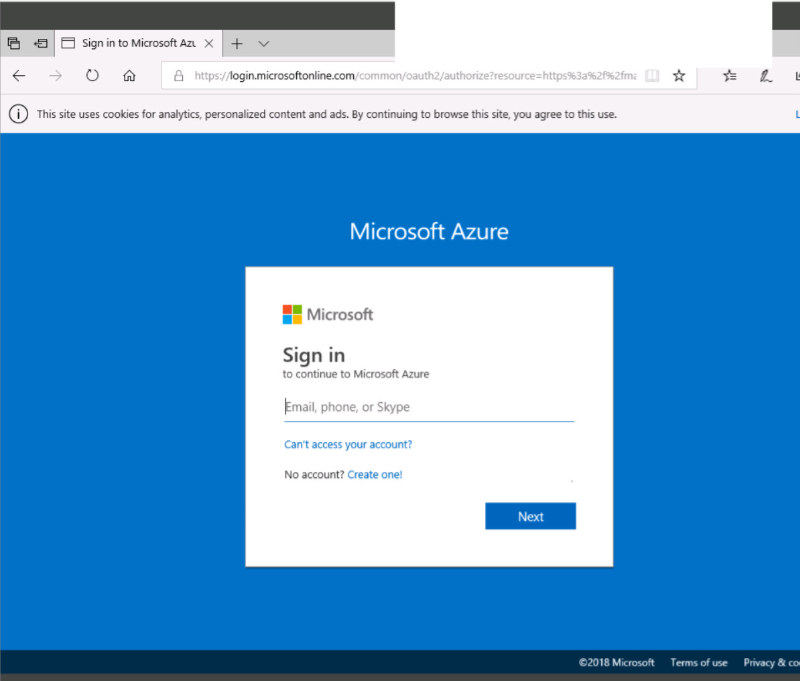
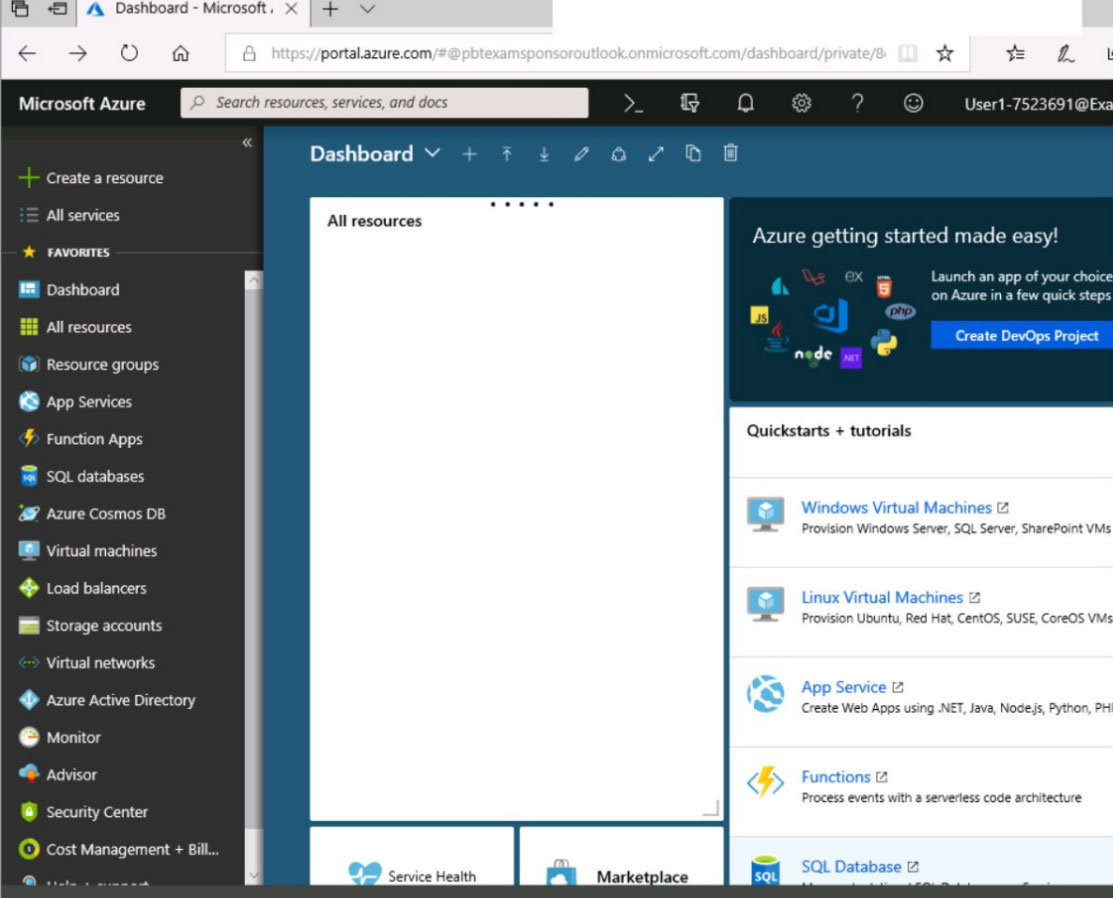
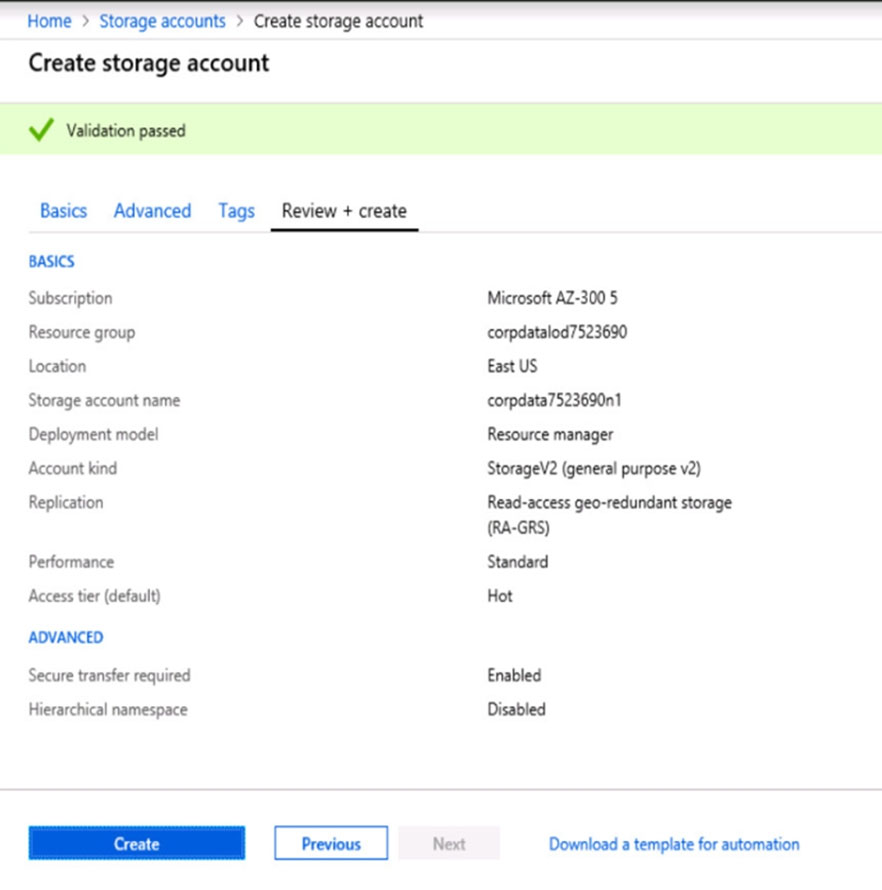
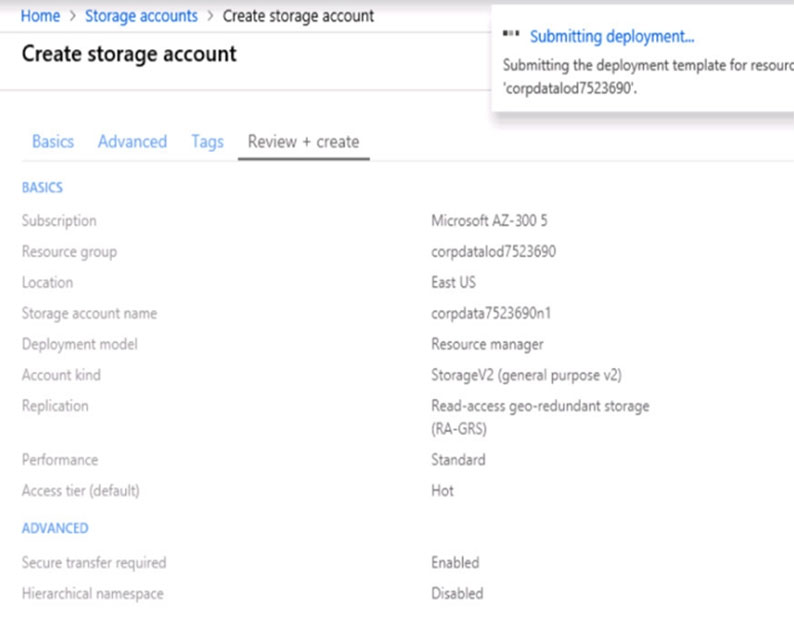
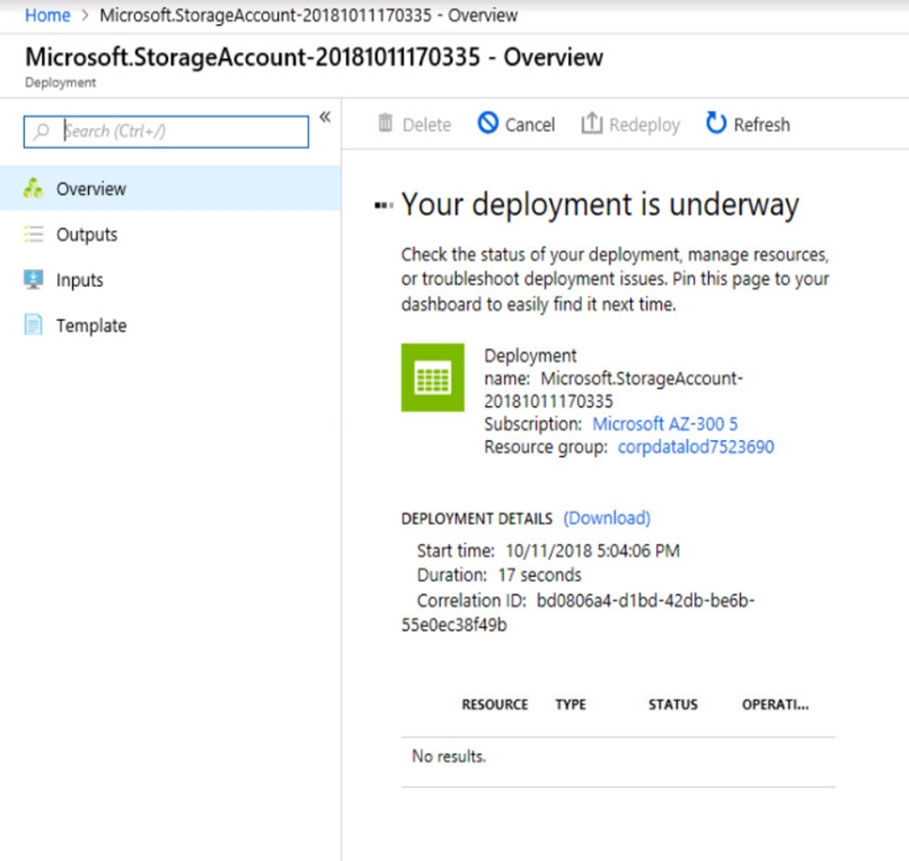
When you are finished performing all the tasks, click the `˜Next' button. Note that you cannot return to the lab once you click the `˜Next' button. Scoring occur in the background while you complete the rest of the exam. Overview - The following section of the exam is a lab. In this section, you will perform a set of tasks in a live environment. While most functionality will be available to you as it would be in a live environment, some functionality (e.g., copy and paste, ability to navigate to external websites) will not be possible by design. Scoring is based on the outcome of performing the tasks stated in the lab. In other words, it doesn't matter how you accomplish the task, if you successfully perform it, you will earn credit for that task. Labs are not timed separately, and this exam may have more than one lab that you must complete. You can use as much time as you would like to complete each lab. But, you should manage your time appropriately to ensure that you are able to complete the lab(s) and all other sections of the exam in the time provided. Please note that once you submit your work by clicking the Next button within a lab, you will NOT be able to return to the lab. To start the lab - You may start the lab by clicking the Next button. You plan to store media files in the corpdata7523690n1 storage account. You need to configure the storage account to store the media files. The solution must ensure that only users who have access keys can download the media files and that the files are accessible only over HTTPS. What should you do from the Azure portal?
You have an Azure subscription that contains an Azure Service Fabric cluster and a Service Fabric application named FabricApp. You develop and package a Service Fabric application named AppPackage. AppPackage is saved in a compressed folder named AppPackage.zip. You upload AppPackage.zip to an external store. You need to register AppPackage in the Azure subscription. What should you do first?
A. Run the New-ServiceFabricApplication cmdlet.
B. Repackage the application in a file named App.sfpkg.
C. Create a new Service Fabric cluster.
D. Copy AppPackage.zip to a blob storage account.
Access Full AZ-303 Mock Test Free
Want a full-length mock test experience? Click here to unlock the complete AZ-303 Mock Test Free set and get access to hundreds of additional practice questions covering all key topics.
We regularly update our question sets to stay aligned with the latest exam objectives—so check back often for fresh content!
Start practicing with our AZ-303 mock test free today—and take a major step toward exam success!


